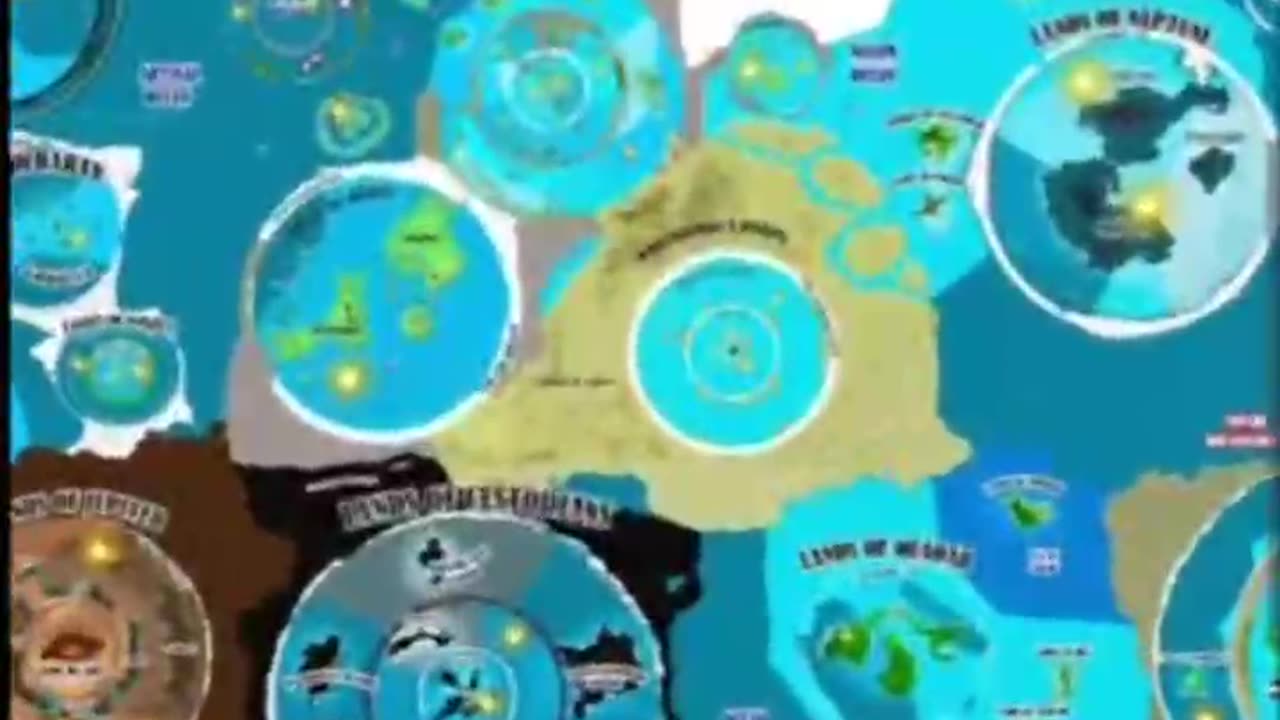Premium Only Content

The Terrarium Earth: Unveiling the Enclosed Flat Earth Model
From a Flat Earth perspective, the Earth is envisioned as a terrarium—a self-contained, enclosed system that defies conventional heliocentric models. In this view, the Earth is a flat, circular plane with the North Pole at its center and Antarctica forming an impassable ice wall around its perimeter. Above this plane, an impenetrable dome or firmament encapsulates the Earth, akin to the glass cover of a terrarium, maintaining the environment and containing the celestial bodies within.
The Terrarium Earth: A Deeper Insight
Enclosed System and Firmament:
The firmament, as described in ancient texts and cosmologies, is envisioned as a protective dome that separates the Earth from the celestial realm. This dome is believed to be a solid or semi-solid structure, keeping the atmosphere and celestial bodies within its confines and preventing anything from escaping or entering from outside. The stars, sun, and moon are considered to be embedded within this firmament, moving in circular paths above the Earth.
Observable Phenomena:
Proponents of the Flat Earth model argue that various observable phenomena support the terrarium analogy:
• Lack of Curvature: Over vast distances, the Earth’s surface appears flat, with no observable curvature. This is evident in long-range photography and high-altitude balloon footage.
• Behavior of Water: Water always seeks its level, indicating a flat plane rather than a curved surface.
• Celestial Movements: The sun, moon, and stars move in predictable, circular paths above the Earth, consistent with a dome-like enclosure.
Water Cycle in the Terrarium Earth Model:
The water cycle is another aspect that supports the idea of the Earth as a terrarium in the Flat Earth model. In an enclosed system like a terrarium, water vapor rises from the surface due to evaporation, condenses into clouds, and eventually falls back to the surface as precipitation. This closed-loop system ensures that water is continuously recycled and maintained within the self-contained environment.
In the Flat Earth model, the firmament plays a crucial role in the water cycle. It is believed to contain the waters above, which are separated from the waters below by a solid barrier. This barrier prevents the water from escaping, allowing for the continuous recycling of water within the Earth’s closed system. The continuous recycling of water within a closed system, as observed in the water cycle, is consistent with the idea of a flat Earth enclosed by a protective barrier or firmament.
Modern Validation through Technological Concepts
The notion of the Earth as a terrarium finds a parallel in modern technological concepts such as biodomes and space habitats. Visionaries like Elon Musk propose creating self-contained, Earth-like environments on Mars to sustain human life. These biodomes are designed to protect inhabitants from the harsh Martian climate, much like the firmament is believed to protect Earth.
Comparative Analysis:
• Biodomes on Mars: These are self-sustaining ecosystems enclosed by protective barriers, allowing for life to thrive in an otherwise hostile environment.
• Terrarium Earth: The Earth, enclosed by the firmament, provides a stable, life-sustaining environment, regulated and protected from external cosmic forces.
Philosophical and Existential Implications
Adopting the terrarium Earth model invites profound philosophical reflections on humanity’s place in the universe. It suggests a designed and purposeful creation, challenging the randomness proposed by the heliocentric model. This perspective places humanity at the center of a meticulously crafted environment, underscoring the significance of human life in the cosmic order.
Conclusion
The terrarium Earth theory from a Flat Earth perspective presents a compelling narrative that blends ancient wisdom with modern speculative ideas. By viewing the Earth as a flat, enclosed system protected by a firmament, this model challenges conventional scientific paradigms and encourages a deeper exploration of our world’s mysteries. The analogy of a terrarium or biodome not only helps illustrate the unique nature of the Flat Earth model but also invites us to reconsider our understanding of the cosmos and our place within it.
-
 6:48
6:48
FragmentsOfTruth
1 day agoThe Hidden Spells of Language: How Words Shape Reality
1551 -
 1:05:31
1:05:31
Glenn Greenwald
11 hours agoSection 702 Warrantless Surveillance Ruled Unconstitutional: Press Freedom Advocate Seth Stern Explains; The Rise of Unions & the Impact of Trump's Populism with Author Eric Blanc | SYSTEM UPDATE #395
112K98 -
 1:01:13
1:01:13
The Amber May Show
9 hours ago $3.64 earnedWomen Of Rumble | Amber, Kelly and Wendy Wild
51.7K5 -
 1:16:38
1:16:38
Josh Pate's College Football Show
11 hours ago $2.30 earnedCFP Title Viewership | JP Poll Under Attack | Bama & Oregon Season Grades | Most To Prove In 2025?
48.8K -
 5:10:59
5:10:59
VOPUSARADIO
15 hours agoPOLITI-SHOCK! "THE TIDE IS TURNING"! 3 SPECIAL GUESTS JOINING US TONIGHT!
32.5K2 -
 52:47
52:47
Kimberly Guilfoyle
13 hours agoDismantling DEI Once and For All, Live with Tyler O’Neil & Eric Deters | Ep.190
98.4K42 -
 1:34:59
1:34:59
Redacted News
12 hours agoBREAKING! TRUMP SIGNS ORDER TO RELEASE JFK FILES, CIA IS FURIOUS | REDACTED NEWS
226K408 -
 1:36:09
1:36:09
Benny Johnson
13 hours ago🚨WATCH: President Trump Declassifies JFK, RFK, MLK Files LIVE Right Now in Oval Office, History Now
171K331 -
 2:02:09
2:02:09
Common Threads
11 hours agoLIVE DEBATE: Will Democrats Roll Over or Fight Back?
30.8K1 -
 54:47
54:47
LFA TV
17 hours agoDonald Trump Sets Israel Up for Failure | TRUMPET DAILY 1.23.25 7pm
32.5K63